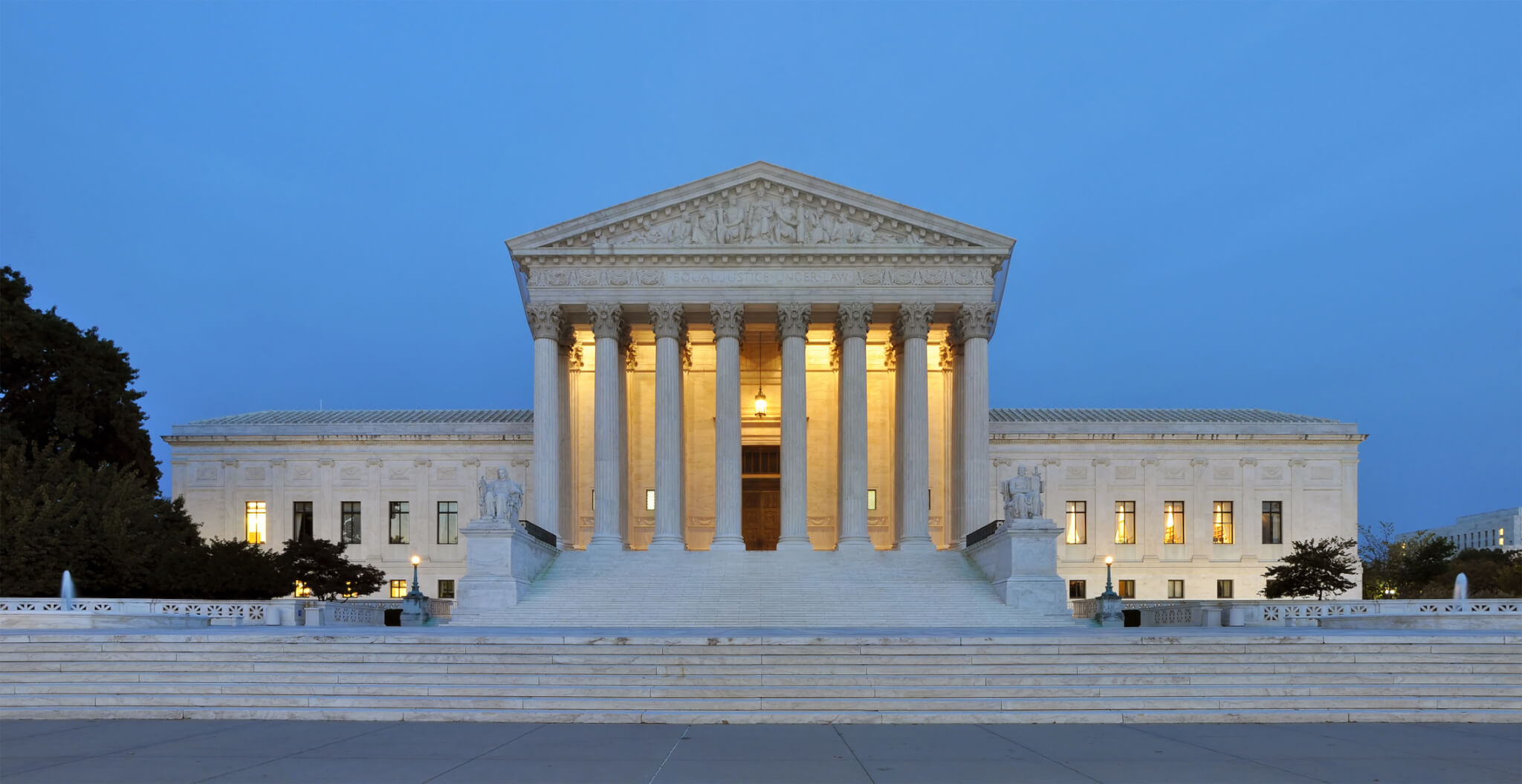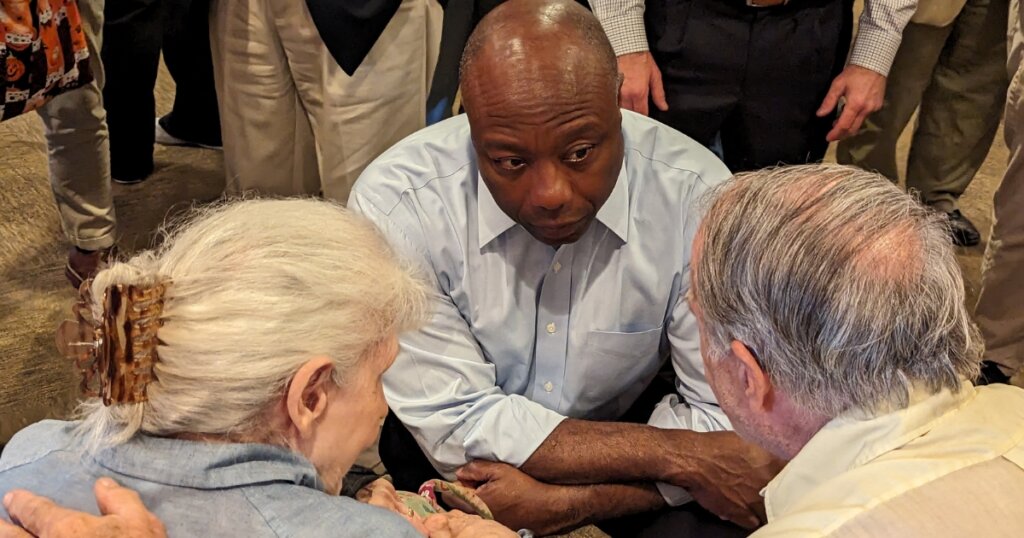
Photo via Wikipedia
Supreme Court reform is a now-widespread idea among Democrats with a variety of proposed options.
Expansion has been a popular proposal with a few 2020 candidates, but limiting the amount of time justices can serve on the Supreme Court is another route that’s often touted.
As of early April, 11 of the candidates running for president have said they supported or were open to the idea of term limits for justices.
Details vary, but the majority of candidates support an 18-year term for justices on the bench. Afterwards, those judges would have the ability to serve on the federal courts. This plan means every president would have the chance to nominate at least two justices to the Supreme Court.
Gabe Roth, the executive director at Fix the Court, a nonpartisan organization that advocates for measures that would make the federal court more democratic, said the basic idea is for Congress to pass a law saying new justices would be federal justices for life, but they can only spend 18 years on the Supreme Court bench.
Roth said current justices would be grandfathered out, and would continue to serve life-long terms.
“Our plan tries to look at the whole picture comprehensively, see what are the things over the last 20 years, or even in the whole history of the Court, that have plagued it in terms of increasing polarization and politicization,” he said.
Fix the Court has advocated for the term limits idea since 2017, and according to a poll conducted by the organization in June 2019, 77 percent of U.S. likely voters support the idea, including 81 percent in the Midwest.
When given the options of term limits, adding justices, not using any of these two proposals or adopting both, 40 percent of U.S. likely voters would prefer term limits.
How It Works
Roth said this reform wouldn’t require changing the Constitution either.
In the first section of Article III of the Constitution, the Framers wrote, “The Judges, both of the supreme and inferior Courts, shall hold their Offices during good Behaviour.”
Throughout U.S. history, that section has been interpreted to give justices life-long terms, but Roth said it could be changed by a statute, the same way matters like the Court’s annual budget, where the justices sit, a lot of their jurisdiction and how many members each court has are decided.
“The idea that you couldn’t, by statute, require justices to move from one court to another, to me just doesn’t make any sense,” Roth said.
[inline-ad id=”0″]
Why Not?
Some opponents, like Suzanna Sherry, a chair in law at Vanderbilt Law School, have claimed it would only polarize the Court even more and make doctrinal changes more sudden, radical and rapid.
Others, like Daniel Hemel, an assistant professor at the University of Chicago Law School, have argued that evidence shows justices have a loyalty to the president that appointed them, and giving a president the ability to appoint so many judges would exacerbate that problem.
Just today, Justice Ruth Bader Ginsburg said she opposes both the idea to expand the Court and the idea of setting term limits, based on the idea that it would take an amendment to the Constitution, a process that takes nationwide agreement and hasn’t been done since 1992.
Roth disagrees with the idea that term limits would make the Court more radical.
“I think that it’s equally likely, if not more likely, that if you’re a justice on the Supreme Court, and you realize that a new colleague is never more than 24 months away, instead of having a radical decision that can be easily overturned in less than two years, you’re probably going to want to try to work more incrementally, to have a more narrow decision that can withstand the test of time,” he said.
Increasing Bipartisan Support
Support for this idea has been growing for a long time, too. Roth said Fix the Court’s plan is based on ideas that have been around for 15 to 20 years. He also said many of the 2016 Republican candidates for president agreed with term limits, and either brought them up independently or expressed support when he asked them.
“I don’t know what the tipping point is going to be on this issue,” he said. “But the fact that so many Republicans talked about it in 2016 and so many Democratic candidates are talking about it in 2019 is a positive. I think it’s seen as a more realistic reform now than it had been before.”
At the end of the day, Roth said justices retire less frequently than they used to, and term limits would reduce the chance of justices dying on the bench, serving while being mentally infirm or staying on the bench until a president they agree with is elected.
“There are reasons to not want the same individuals serving on the Supreme Court, whether you’re left, right, center, for 30 or 40 years,” Roth said. “Power in the hands of unaccountable individuals for that long is not the hallmark of a democracy, it’s the hallmark of an oligarchy.”
by Nikoel Hytrek
Photo via Wikipedia
Posted 7/24/19
Support Our Cause
Thank you for taking the time to read our work. Before you go, we hope you'll consider supporting our values-driven journalism, which has always strived to make clear what's really at stake for Iowans and our future.
Since day one, our goal here at Iowa Starting Line has always been to empower people across the state with fact-based news and information. We believe that when people are armed with knowledge about what's happening in their local, state, and federal governments—including who is working on their behalf and who is actively trying to block efforts aimed at improving the daily lives of Iowan families—they will be inspired to become civically engaged.


Original, heels or boots: Pritzker says leading Republicans are all MAGA
Illinois Gov. JB Pritzker said all three leading candidates in the Iowa GOP caucus—Donald Trump, Nikki Haley, and Ron DeSantis—represent the same...

Trump tells supporters it is worth dying to caucus for him
Former President Donald Trump continues to encourage his massive base to turn out in droves for him during Monday’s Republican caucus and told an...

Climate change protesters disrupt Ron DeSantis event
Climate protesters disrupted a Gov. Ron DeSantis campaign event in Ames on Thursday night. Three protesters were escorted out of the room at...

Evangelical leaders predict huge caucus turnout, downplay endorsements
Iowa caucus candidates have racked up big-name endorsements—including a notable last-minute flip flop—but one evangelical leader said none of that...

We went to Vivek Ramaswamy’s ‘Vektoberfest.’ Here’s what we saw
As I sat on a park bench eating a bacon-grilled cheese sandwich, drinking an Exile Ruthie straight from the tap, and chit-chatting with a few folks,...

Tim Scott says kids need more exposure to conservatism
While many Republicans across the country have spent the last few years arguing that public schools are being used to indoctrinate kids into leftist...





